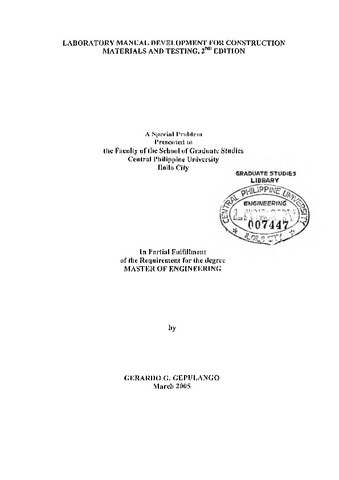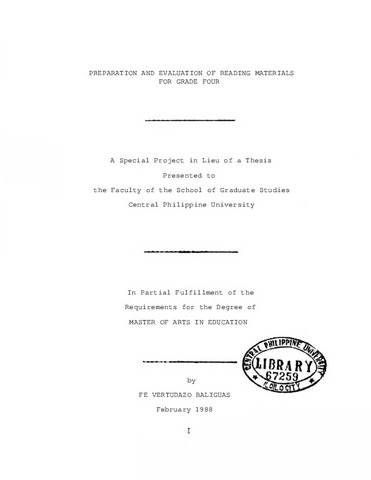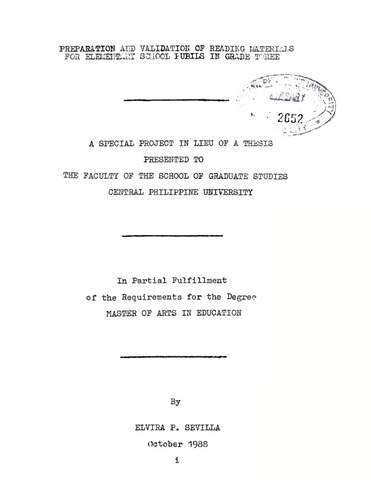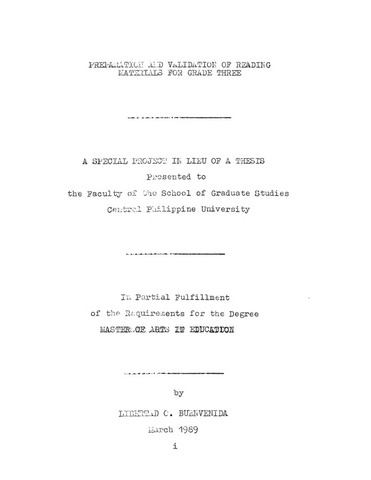Laboratory manual development for construction materials and testing, 2nd edition

Page views
2,160Date
2005Auteur
Thesis Adviser
Defense Panel Chair
Share
Metadata
Afficher la notice complète
Résumé
Background
Experimentation and testing plays an important role in the developing new materials and devices and in controlling the quality of materials for use in design and construction. In the educational process they also serve, through direct involvement of the student, to give substance to theoretical concepts and to provide a means of augmenting insight gained from analytical studies. For these reasons, students of engineering, architecture, and other fields associated with design activities or resource utilization can benefit from experiences in obtaining the first-hand information about materials and processes.
This manual has been prepared for the purpose of standardizing the department’s sampling and testing procedures and to provide assurance that the materials and workmanship incorporated in each construction project are in reasonably close conformity with the requirements of plans and specifications. This is not designed as a field manual but is intended to be used in Construction Material and Testing laboratory and other offices for guidance, reference. This manual describes the test procedures that are currently use in Construction Material and Testing laboratory.
The second edition of this manual has been reorganized. To achieve simplicity and straightforwardness without compromising content, each exercise incorporates a discussion of theory, principles and calculations in addition to detailed, step-by-step procedure. Tabulated worksheets and space for computations are also provided to simplify and facilitate data recording and analysis. A new ASTM, AASHTO and ACI specification has been introduced to supersede the previous specifications of the same agencies.
Conceived, designed and developed for Central Philippine University civil engineering students, specifically those enrolled in the course Construction Material and Testing under the semestral system, this manual presents different exercises, each embodying a standard procedure for testing specific material. The laboratory testing has been arranged so that each test may be performed well within a three-hour period.
The use of fabricated equipment, substitutes, and innovations is strongly recommended in the Construction Materials and Testing laboratory. This recommendation is being made in order to meet the minimum standards recommended by the Technical Panel for Engineering, Technology and Architecture (TPETA) for Material Testing Laboratory. The use of fabricated equipment will also help reduce the total cost of obtaining the equipment.
In a similar manner of compliance, the material-testing procedures presented herein adhere to established international and local standards.
Objectives of the Study
The objectives of this laboratory manual includes the following:
1. To familiarize students with the mechanical properties of engineering materials.
2. To develop skill in methods of observation.
3. To develop knowledge of basic and accepted method testing procedures.
4. To learn writing and communication skills, including Internet use.
5. To learn critically evaluate laboratory procedures in the resulting data, including data manipulation on computers.
6. To learn to work in teams.
Description
Thesis introduction
Suggested Citation
Gepulango, G. G. (2005). Laboratory manual development for construction materials and testing, 2nd edition (Unpublished Master’s special paper). Central Philippine University, Jaro, Iloilo City.
Type
Special paperSujet
Department
School of Graduate StudiesDegree
Master of EngineeringShelf Location
GSL Theses 620.0072 G29
Physical Description
100 leaves
Collections
Related items
Showing items related by title, author, creator and subject.
-
Preparation and evaluation of reading materials for grade four
Baliguas, Fe Virtudazo (1988)This project aims to prepare and evaluate supplementary reading materials for grade four pupils. It endeavors to meet the demand for more instructional reading materials suited to the interests and reading abilities of the ... -
Preparation and validation of reading materials for elementary school pupils in grade three
Sevilla, Elvira P. (1988)The purpose of this study was to prepare and validate supplementary reading materials for grade three pupils in Region VI with emphasis on the development of comprehension skills. This aimed to answer the following ... -
Preparation and validation of reading materials for grade three
Buenvenida, Libertad C. (1989)This study attempted to produce six supplementary reading materials for Grade III focusing on the three comprehension skills namely; noting details, getting the main idea, and identifying the key sentence in a paragraph. ...




